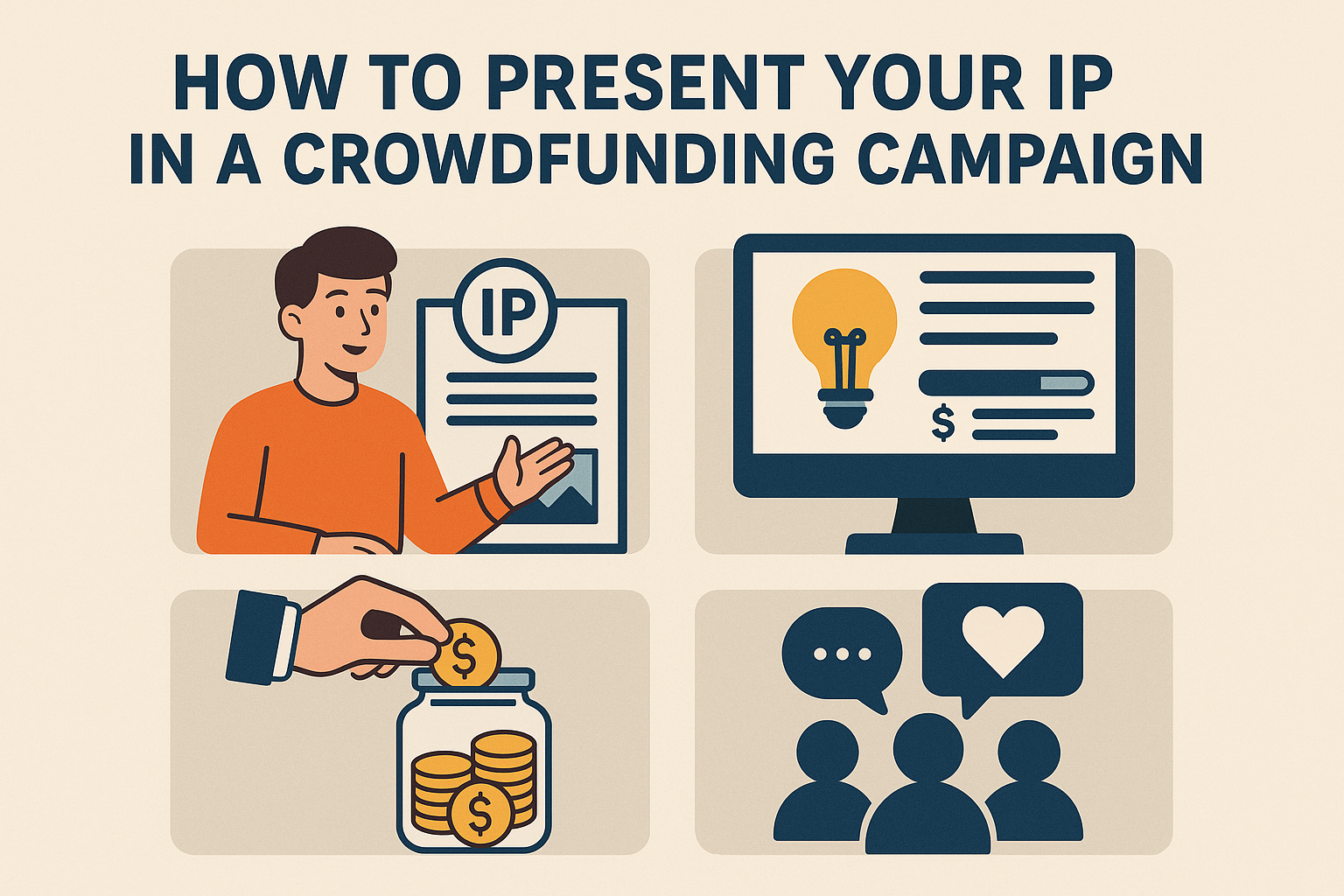📌 Quick Summary
1-Sentence Answer: Successfully showcase your intellectual property in crowdfunding by clearly communicating value while safeguarding sensitive details.
The Article Overview: This guide provides actionable steps, insights, and best practices for clearly and securely presenting your intellectual property (IP) on crowdfunding platforms, ensuring optimal engagement and protection.
❓ Common Questions & Answers
Q: Should I reveal my patent details on a crowdfunding platform? A: No. Only disclose broad concepts, not specific patent claims, to prevent imitation and maintain your competitive edge.
Q: How detailed should my IP presentation be? A: Focus on the innovation's benefits and uniqueness without divulging technical specifics that compromise IP protection.
Q: Can crowdfunding jeopardize my IP protection? A: Yes, premature disclosure can risk IP rights. Always file protections like provisional patents before launching your campaign.
Q: Is a trademark important for crowdfunding? A: Absolutely. Trademarks ensure your brand identity remains protected, adding value and credibility to your campaign.

📜 Step-by-Step Guide
-
Secure Provisional IP Protection: File provisional patents or trademarks before crowdfunding to establish your rights.
-
Define Your Unique Selling Proposition (USP): Clearly identify and communicate your innovation's uniqueness without compromising IP security.
-
Craft a Compelling Narrative: Use storytelling to explain the problem your innovation solves, avoiding detailed technical disclosures.
-
Create Visual Representations: Share visuals, mockups, or animations to showcase your concept engagingly without revealing proprietary details.
-
Plan Your Communication Strategy: Develop FAQ sections and updates to control what information gets released and when.
📖 Historical Context
Intellectual property and crowdfunding intersect significantly due to the open nature of online campaigns. Historically, inventors relied on closed-door pitches to investors, but crowdfunding democratized funding, significantly changing the dynamics around IP exposure. Over time, as platforms like Kickstarter and Indiegogo gained prominence, managing IP disclosure became crucial.
Many successful products such as Oculus Rift and Pebble smartwatches have navigated this challenge by cautiously revealing innovations without compromising patent specifics. However, incidents of intellectual theft or copycat products have highlighted the risks of improper IP handling on crowdfunding platforms. The balance between openness and caution thus emerged as a critical theme in crowdfunding history.
Today, inventors employ advanced strategies like provisional patents, secure IP disclosures, and strategic information control to protect their innovations while capturing audience interest and investment.

🏢 Business Competition Examples
-
Pebble Watch: Successfully showcased technology without detailed technical disclosure, raising millions while safeguarding IP.
-
Coolest Cooler: Initially struggled by disclosing detailed concepts prematurely, resulting in copycats.
-
Oculus Rift: Strategically controlled IP disclosure, attracting investor interest without exposing crucial IP elements.
💬 Discussion Section
Effectively presenting IP on crowdfunding platforms requires meticulous planning and strategic disclosure. Your narrative must emphasize unique market value without providing overly specific technical information that could lead to imitation. Visual storytelling, combined with strategic communication, proves highly effective in capturing investor imagination without risking IP theft.
Transparency with potential backers about your protection efforts, such as patent filings, reinforces trust. Regular updates can maintain engagement while controlling the flow of sensitive information. Remember, the crowdfunding audience often values innovation's impact and market readiness more than granular technical details.
Legal considerations must also inform your disclosure strategy. Engaging legal expertise to review content before publishing significantly reduces risks. Proactive management of IP on crowdfunding platforms isn't just protective—it often enhances credibility and campaign attractiveness.
⚖️ The Debate
Pro Transparent IP Disclosure: Clear disclosure builds trust and demonstrates confidence, enhancing campaign attractiveness.
Con Transparent IP Disclosure: Excessive detail invites imitation risks and potential legal complications, compromising future protection.
✅ Key Takeaways
-
Secure provisional patents or trademarks early.
-
Emphasize benefits, not specifics.
-
Control information strategically.
-
Regularly communicate with your backers without compromising IP.
⚠️ Potential Business Hazards
-
Risk of premature disclosure.
-
Potential IP theft from competitors.
-
Loss of future IP rights due to early disclosure.
❌ Myths & Misconceptions
-
Myth: Complete IP details boost credibility.
-
Myth: Patents automatically ensure IP protection online.
-
Misconception: Crowdfunding guarantees IP safety.
📚 Book & Podcast Recommendations
-
"Patent It Yourself" by David Pressman (Link)
-
"Crowdfunding for Social Good" Podcast (Link)
-
"The Lean Startup" by Eric Ries (Link)
⚖️ Legal Cases
-
Pebble vs. Knockoffs: Set precedents for managing IP disclosures. (Link)
-
Coolest Cooler Litigation: Highlighted crowdfunding IP risks. (Link)
-
Oculus vs. Zenimax: Major IP dispute post-crowdfunding. (Link)
📣 Expert Invitation
Explore deeper IP strategies and engage with IP professionals at Inventive Unicorn.
🔚 Wrap-Up Conclusion
Safeguarding IP in crowdfunding isn’t just protective—it enhances credibility, engagement, and ultimately, campaign success.











